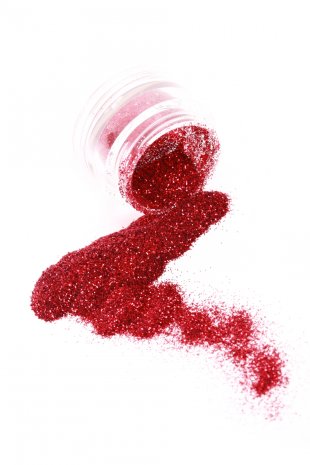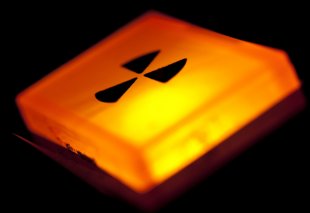
Islamic State (Isis) has set its
sights on obtaining a rare and incredibly expensive lethal substance
called Red Mercury that can make nuclear bombs as small as a sandwich
bag, but there's only one problem – it doesn't exist.
What is Red Mercury?

The legend revolves around the existence of a mythical compound known as Red Mercury, which is meant to be the main ingredient for a dirty bomb that would have devastating effects, causing radiation contamination and nuclear explosions of never-before-seen proportions.
Red Mercury is allegedly made from mercury iodide – a scarlet-coloured powder that is odourless, tasteless, insoluble in water and poisonous, but it will turn yellow when heated above 126 degrees Celsius.
It is an elaborate hoax that first appeared in major Soviet media in 1979 as a dream substance sold on the black market by arms dealers for hundreds of thousands of dollars per kilogram.
Seemingly, Red Mercury could do whatever an army, dictator, Bond villain, rogue government, freedom fighter or terrorist wanted it to do, from making a super-powerful weapon to acting as an anti-radar paint or single-handedly guiding missiles.
Although no one ever explained exactly how Red Mercury worked, an American physicist named Samuel T Cohen added his voice to the growing speculation about Red Mercury in the Western media in the early 1990s, claiming the substance would enable nuclear weapons to become much smaller than they are today, and he continued to talk about how unprepared the US was for such an attack until his death in 2010.
His assertions were enough to spur ample articles in the Western media, and UK's Channel 4 made two TV documentaries on Red Mercury in 1993 and 1994 entitled Trail of Red Mercury and Pocket Neutron, which both claimed that there was "startling evidence that Russian scientists have designed a miniature neutron bomb using a mysterious compound called Red Mercury".
Mythical bomb substance debunked
Russian arms dealers and merchants on the black market had a field day, however, as they continued to sell packets of the red powder to clients in the Middle East and Europe who would do almost anything to get it throughout the 1980s and 1990s, even though they had absolutely no idea what it actually was.
Eventually, in 1997, the Bulletin of the Atomic Scientists finally declared that Red Mercury was fake, stating:
"The asking price for red mercury ranged from $100,000 to $300,000 per kilogram. Sometimes the material would be irradiated or shipped in containers with radioactive symbols, perhaps to convince potential buyers of its strategic value. But samples seized by police contained only mercury(II) oxide, mercury(II) iodide, or mercury mixed with red dye — hardly materials of interest to weapons-makers."
A year later, 15 researchers from the Lawrence Livermore National Laboratory, which helps to maintain US nuclear weapons, published an article in the Journal of Radioanalytical and Nuclear Chemistry, declaring that Red Mercury was undoubtedly "a relatively notorious nuclear hoax".
However, no one wanted to listen, as purchases of Red Mercury continued on the black market, and a 1999 issue of IHS Jane's Intelligence Review reported that Western intelligence agencies were using Red Mercury to lure al-Qaida operatives into the open, persuading them to travel to the US, where special agents disguised as arms dealers were waiting to arrest them.
Even funnier, in 2004 three men were tried for trying to obtain Red Mercury in the UK, and prosecutors told the jury that even though the substance didn't actually exist, this fact was irrelevant as the men had clearly meant to do harm by building a dirty bomb with it. In the end, they were cleared.
The urban legend lives on

You would think, what with the advent of the internet and the plethora of information available, that any would-be terrorists would today know better, but no. An in-depth report by the New York Times says IS is still keen to purchase the mythical substance, and they reportedly were willing to pay up to $4m (£2.6m) for it, because they thought that other Jihadists had found it first.
Apparently, IS told NYT source Abu Omar that they were willing to buy Red Mercury, as long as it matched specific photos they had obtained. In the Middle East, the urban legend has widened and people in Turkey, Saudi Arabia and Syria all believe in the existence of both "hot" and "cold" Red Mercury.
Smugglers on the black market claim that if Red Mercury is real, it will be attracted to gold but repelled by garlic, and that different colours of the same substance can even increase sexual potency. It is even claimed that old Soviet sewing machines contain tiny caches of the substance and you can harvest it from old workshops.
So does the substance exist? Omar
fervently claims it does, but that he was unable to give it to IS, and
one of his associates obtained the substance but was caught by Turkish
police. However, the NYT was unable to verify any of these claims, and
the terrorists clearly haven't got it, or they would have used it by
now.
https://uk.news.yahoo.com/hunt-red-mercury-isis-tricked-120000841.html#BwBZoI5

No comments:
Post a Comment